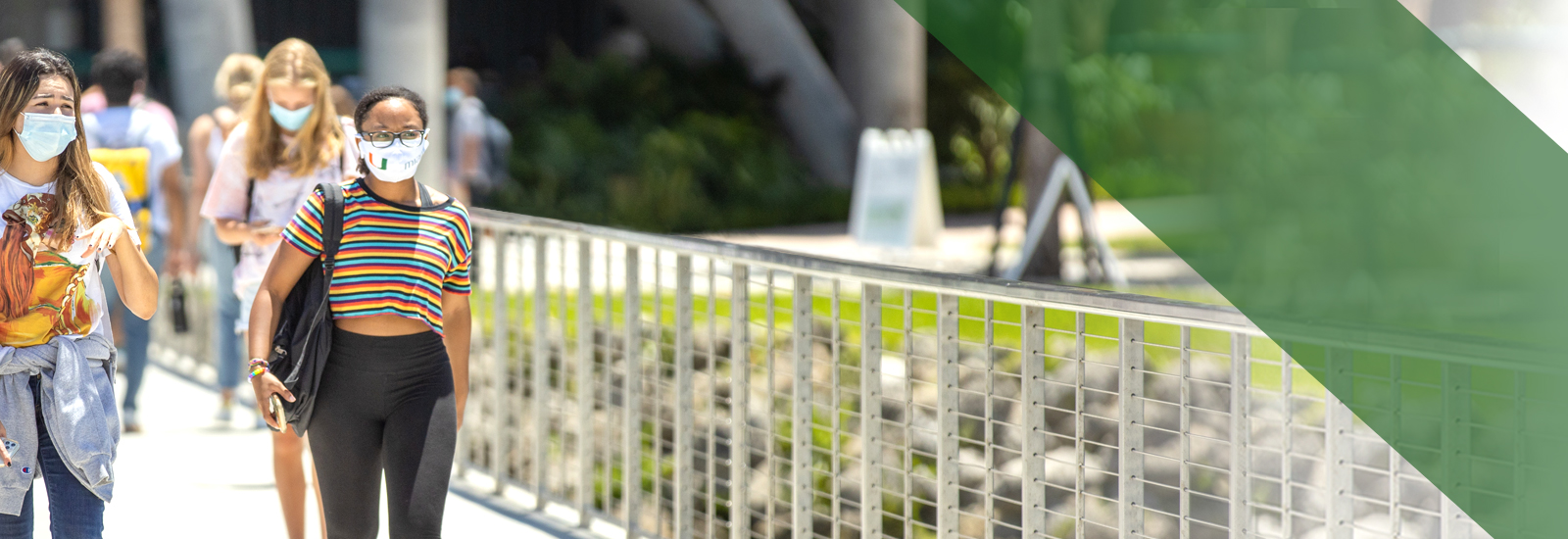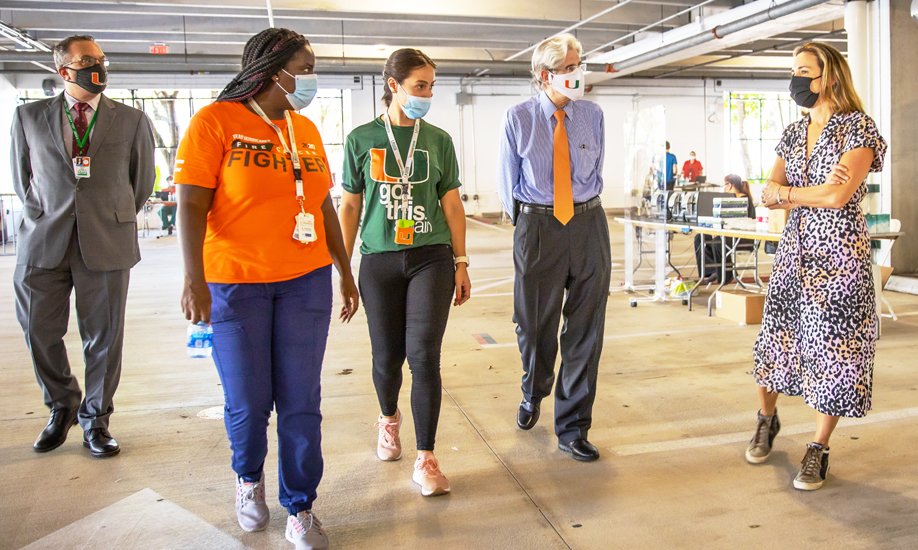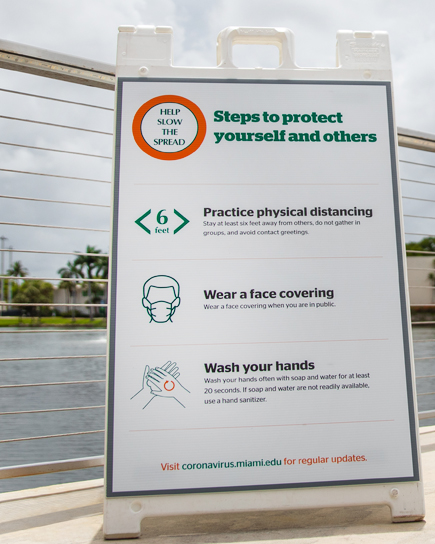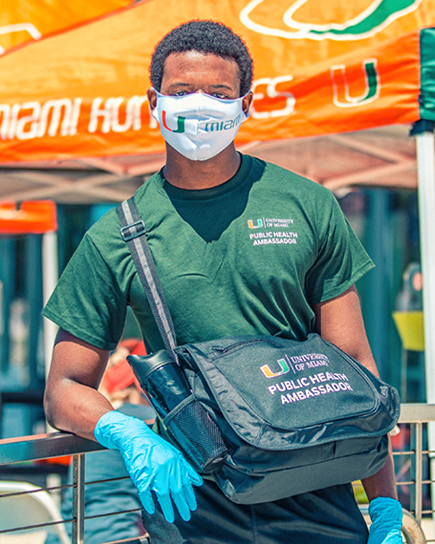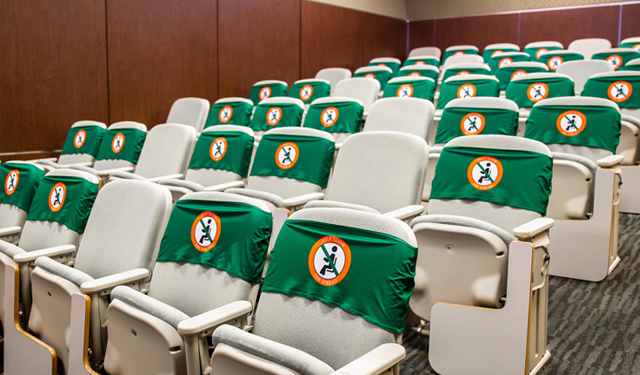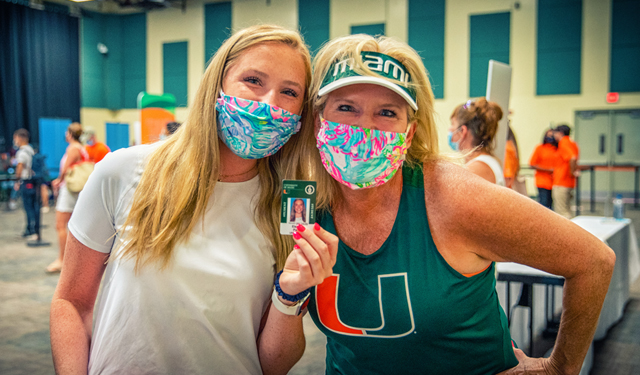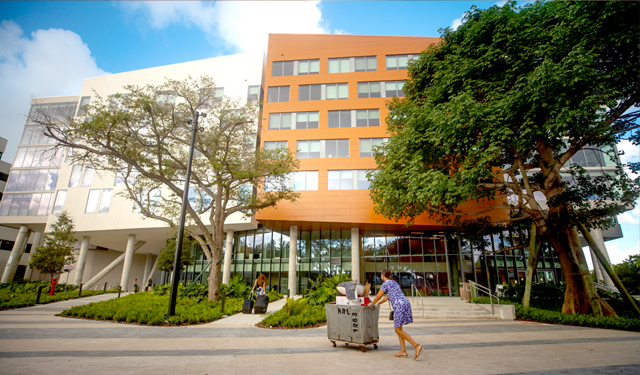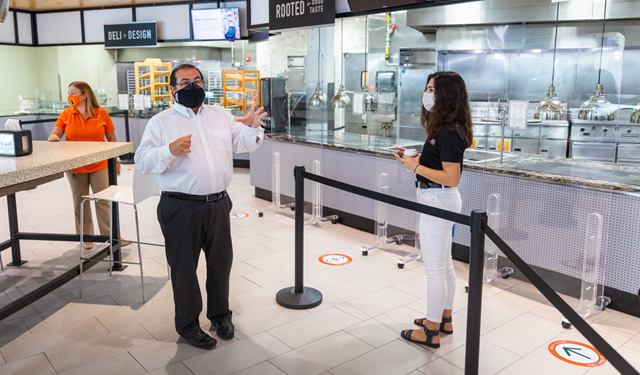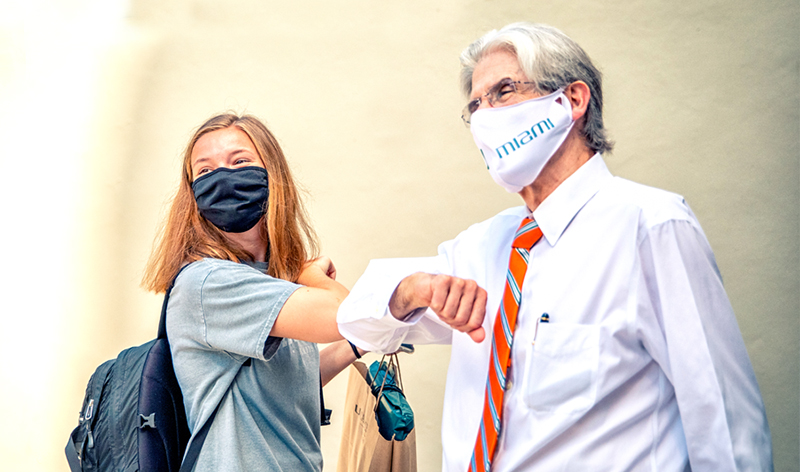Move-in Week
The Coral Gables Campus was buzzing Monday, Aug. 11, as hundreds of new ’Canes arrived, eager to move into their residence halls. The process included an additional day for arrivals; staggered, scheduled check-in appointments to prevent crowding; and the requirement to test negative for COVID-19 prior to coming to campus. By mid-week, 1,700 first-year residential students were settled, with returning students moving in later in the week.
The Watsco Center Fieldhouse served as a check-in hub. Students confirmed their pre-arrival COVID-19 test result, and received their ’Cane Card, on-campus housing assignment, and a Safe Return to Campus Kit—which included a face covering, disposable gloves, antibacterial wipes, a hand sanitizer, a thermometer, and more.
Nathaniel Valentine, a first-year student from Brooklyn, New York, was among the first group of students to step onto campus. “It was kind of surreal and bittersweet arriving,” says Valentine, a business major. “I felt good because of how welcoming and homey campus feels and look forward to getting to know my classmates and hopefully having a good time despite this coronavirus thing.”
Eleanor Parks, a first-year musical theatre major, says the welcoming atmosphere helped her adjustment. “I’m really excited about walking around and seeing all that the campus has to offer,” she says.
Parks’ mom, Meredith, was excited to meet President Frenk for the first time, having closely tracked his social media posts regarding the University’s reopening plans.
On Wednesday, Aug. 13, the first students arrived to take up residence in Lakeside Village, the new 12-acre, transformative housing complex on the shores of Lake Osceola.
Many stopped outside the entrance, gazing up at the inspiring six-floored structure before entering to locate their apartment or suite. The impact was unanimous: “Beautiful.” “Gorgeous.” “The architecture is so Miami.” “Amazing.”
“There are so many things in here to see and explore,” says Alexander Miller, a sophomore neuroscience major. “I had a good on-campus living experience last year but am looking forward to apartment living and a more mixed-living experience.”
Natalie Rodas, who will share an apartment with roommates she met while living in Hecht Residential College last year, appreciated Lakeside’s centralized location. “I can be everywhere I need to go within a short walk,” says the sophomore majoring in marketing and finance. “And the view from my room is even better than I expected.”
Let the Learning Begin
The first day of classes on Monday, Aug. 17, had all the South Florida look and feel of a start to the University’s fall semester—searing South Florida heat and blazing sun. Candace Sukie, a nursing student from Miramar, Florida, had three classes on campus her first day and was happy to be able to attend in person.
“Everything feels clean and organized, and the campus is really pretty,” Sukie remarks. “I also like how they assigned seats and spaced out the desks so there was no confusion.”
Nouf Behbehani, a first-year student from Kuwait, was excited to begin her environmental engineering studies.
“I really want to become an inventor,” she says. “I hope all the things I can learn this year will benefit me to become an engineer and later an inventor, so I can make a good change in my life and make changes for the environment.”
Donald Henry, a nursing student who hails from Haiti, had a super start to his first college classes. He noted the many safety measures that had been put in place. “Everything—from the bus stop to the classrooms to the cafeteria—was so clean. I believe this was planned out very well.”



